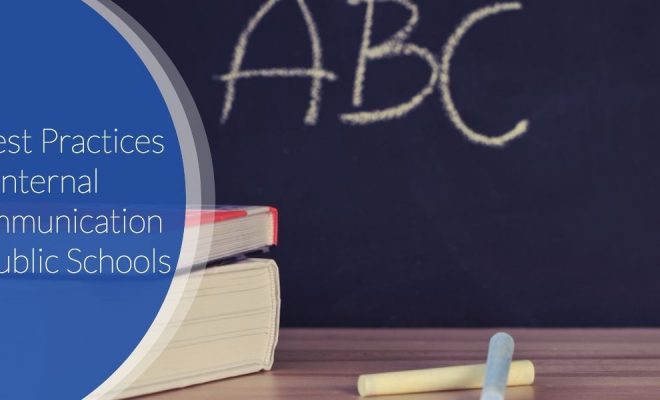Diverse Conversations: The Technology to Successfully Connect College Students

By Matthew Lynch
Kim Rubenstein, Psy.D., is a faculty member at The Chicago School of Professional Psychology and the co-founder of Compatibility, a program that attempts to increase student engagement and empowerment in their college experiences. The program does this through tools that look for the best compatibility when it comes to roommate, peer and mentor (peer/faculty/alumni) relationships, as well as club and organization involvement on campus or in the community.
Question: What are colleges and universities doing right when it comes to serving whole students, as opposed to just providing academics?
Answer: Assumed within this question are two very important statements: (1) Service matters and; (2) Students are complex, representing more than the cognitive mastery demonstrated to gain acceptance into the academic institution. In fact, those factors which may have most contributed to acceptance, may not ultimately represent what keeps them enrolled.
There is a paradigm shift occurring in higher education. According to the National Student Clearinghouse Research Center, nearly one-third of students who started college in 2012 didn’t return to a U.S. school the following year. Institutions of higher learning are listening to what is ultimately an informal call to action. Many are investing human capital and resources in the form of technologies and programming towards supporting student success even beyond the first year. They are holding themselves accountable, recognizing that the responsibility to the student goes well beyond recruitment and onboarding.
On the front end, there is a slow trend towards colleges and universities becoming either test optional or weighting less heavily, traditional standards for admissions. Students are being evaluated for entry based upon a broader range of criteria. These innovative methods may ultimately prove themselves as more inclusive models, providing expanded opportunities for students. Expanding admissions criteria may also help to diversify the campus population, lending to an enriched academic community of learners and contributors.
Colleges and universities are making progress towards alternative opportunities for learning and growth outside of the classroom. Curricular changes, such as service learning, immersion programs and community engagement not only serve the student’s potential, but provide opportunities for students to become engaged learners and leaders. In addition to competency-based learning, these changes are helping schools to reconsider the meaning of student learning outcomes and program effectiveness.
Schools are working to get smarter. They are asking better questions, such as, “From the inordinate amount of institutional and other student-related data, which is most meaningful?” Instead of feeling burdened by data, colleges and universities are learning to prioritize the most relevant information to create more impactful dialogue, enhance decision making, and ultimately, gain deeper insights into their student population.
Q: How is technology playing into a positive shift of better retention when it comes to college students (and how can it be used more effectively to do so)?
A: When technology is embraced as a means towards improving retention efforts, the impact can be substantial, particularly with regard to student yield, engagement and supporting a campus culture of innovation. Models for course delivery, such as Blackboard or Canvas, have demonstrated success as a means to engage both students and faculty. These systems provide open access of instructional materials, interactive pedagogical exercises and the facilitation of dialogue.
One positive impact towards engagement (and ultimately retention), is that the student has the opportunity for real-time performance feedback. Students are reminded that their contributions matter. In fact, they are expected to pull from internal resources to participate, being held (and holding themselves) accountable to maintaining a level of academic investment. Success therefore, demands consistently-applied effort. Additionally, students feel empowered in an environment that values their voice and associated contributions. For example, real-time feedback provided through mid-term course evaluations allows the student voice to be considered. In this regard, the technology serves as a developmental tool, supporting both faculty and student engagement. Ultimately, this type of relationship with technology can promote a sense of connection and progression towards course learning objectives and outcomes.
Other areas in which technology has become embraced can be found in various offices for retention and student success on campus. For example, Student Affairs at the University of North Texas at Dallas has recognized that students prefer to use their mobile devices as an optimal form of communication. In response, they’ve chosen to interact with students by making information accessible through technology. Events are posted on a shared calendar, as are online workshops, webinars and podcasts, each of which are intended to keep students engaged. Other schools are similarly rethinking first-year student experience by offering online first-year seminar courses and/or providing laptops for those who don’t have access.
The twofold challenge is where and how to best reach students. Some schools have observed that students may not always read and respond to email and have opted for systems that can text information, for others, the jury is still out.
Q: What was the motivation for developing Compatibility?
A: As a faculty member, I recognized the importance of student (and faculty) engagement and the mediating role played by relationships. Specifically, I was compelled by attributes of students who’d persist versus those who struggled or did not complete their studies. I was also a fan of Nancy Schlossberg’s theory of Marginality and Mattering (1989), which essentially posed the questions, “Am I central or marginal in a community and as a result, do I belong?”
Anecdotally, it seemed that students who felt a sense of belonging and connectedness to the program/institution appeared to engage with faculty, peers and course material. I admired how they took advantage of opportunities to participate in co-curricular and scholarship activity; whereas, I felt helpless when I’d learn of a student, who for one reason or another, did not complete the program.
I couldn’t negotiate in my mind how it could be that a student who appeared well-equipped upon entry may have lacked the intrinsic or external tools to support them in becoming engaged with the academic experience, specifically relationships beyond the classroom. Did we know if students felt as if they mattered to anyone on campus? Could it have changed the student’s trajectory?
Along comes Andrea Meltzer, a colleague and now co-founder/CEO of Compatibility. Andrea called me with a simple question, “Is there any scientific means to match college roommates?”
Given Andrea’s question and my curiosity about intrapersonal and interpersonal characteristics associated with student success, we embarked upon years of research to explore the connection between relational experiences and student success.
We’ve since learned that while similar personal attributes are important in student connections, elements of individual and cultural differences play a significant role. Sometimes it’s the differences that make all the difference.
Q: How do tools, like the Compatibility system, contribute to a more diverse college landscape?
A: The predictive analytics that Compatibility employs in its programs connect students based on elements of individual and cultural differences that are far more profound than surface level characteristics.
Students are in ongoing processes of identity development. We’ve learned from students who have used the Compatibility program that the experience has helped them meet and establish relationships with students who they may not have otherwise met. For example, when social media is encouraged as a method for students to meet, there tends to be an over-reliance on self-created profiles. Often, these profiles represent the student’s attempt at looking, “their best” or how they think they, “should” appear to others. Students may have a tendency to seek people who “look like” them. From what we’ve ascertained, this is not necessarily predictive of strong relational outcomes.
By incorporating methods that consider values, behavioral preferences, personality characteristics and attitudes, we can support students in their search for others on campus. Our method helps students make more deeply- informed choices. It’s still the job of the student to make any relationship work; however, we’re confident that our method will help identity those relationships most poised for success.
Through facilitating connections to students based on the science of successful relationships, whether to roommates, peers, mentors, and clubs/ organizations, Compatibility allows students to break out of the silos in which they’ve traditionally lived and explore meaningful relationships with others who on the surface, may appear very different. We are committed to learning, to the best of our ability, the degree to which we can help create a more diverse landscape of students that persist.
Q: How can colleges and universities up their graduation rates, particularly for disadvantaged students?
A: Increasing graduation rates for marginalized students begins first and foremost with values. The first step is to value and really know your student population within the context in which they are entering and exiting the academic system.
Simply recognizing that all applicants and admitted students enter the academic system with varied knowledge and ability isn’t enough. Disadvantaged students may have equal potential as their more privileged peers on campus; however, they face more barriers towards success. Therefore, the question becomes, “how do you identify and support a student’s needs and potential?” A nice place to start may be found in expanding admissions criteria to include more broad representations of a student’s life experience. This type of data can help schools prepare appropriate early interventions.
Colleges and universities should prioritize funding for initiatives that support disadvantaged students. For example, providing access to resources and experiences outside of the classroom in which students can establish relationships with faculty, alumni and professionals in the community, can help prepare them for internships and future employment. Additionally, creating opportunities on campus for students to exchange ideas and contribute to a culture of innovation and service can help disadvantaged students experience a felt sense of community, contribution and success.
In order to promote persistence and success for disadvantaged students, schools need to think outside the box. The campus community is a microcosm of a larger system that is in desperate need of change. If academic institutions change how they prioritize disadvantaged students, graduation rates for these students will soar.






